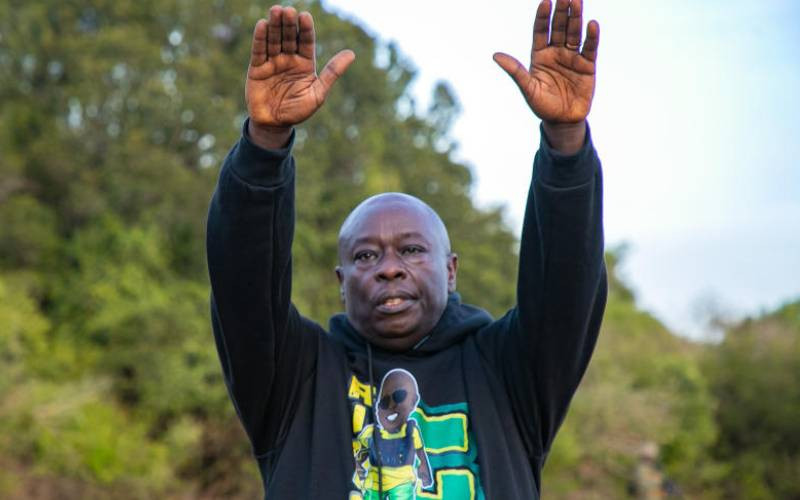Political mergers and coalitions generally do not last; they disintegrate whether or not they attain their objectives. In political processes involving multiple factions each jostling for positions, political fragmentation is normal. Those thinking of mergers or coalitions do two things. First, they admit their individual weaknesses and then gang up supposedly to remove this weakness. Second, distrust and likelihood of betrayal are rife as they haggle over acceptable compromises and who the ‘leader’ would be.
This explains the length they go to reach MoUs on what would happen after ‘victory’. They then put up brave campaign faces. It happened in 2002 before Narc removed Kanu from office and in 2012 in Jubilee. The acrimony in Jubilee follows a normal pattern.
Few people could foresee the disintegration of Jubilee whose two principals, Uhuru Kenyatta and William Ruto, seemed like identical peas in a political pod. In their first term, they gave the impression of co-presidency, rather than president and deputy.
Nyachae-led rebellion
At times, the deputy appeared more influential than the president with things going his, rather than the president’s way. When some ‘presidential’ followers grumbled about ‘neglect’, the deputy explained the reason as being preparation for the second term after which the president would concentrate on his backyard. All said and done, however, the DP appearing to equal or outshine the president was a political blunder.
Ruto also ignored history. He suffered an intellectual disposition common with some ministers of Higher Education who disparage history even as they help to make history. He was in Youth for Kanu ‘92 (YK92) that successfully campaigned for President Moi in 1992.
Among Moi’s first actions on winning the election was to smash YK92 because it reportedly engaged in unbecoming behaviour. Resourceful Ruto then successfully worked to dethrone Reuben Chesire in Eldoret and entered Moi’s inner circle. The koperesen dalliance between Moi and Raila, forgetting 1982, was in the air. Ruto was Moi damu and Raila skeptical.
Moi and Raila failed to persuade Parliament to adjust the constitution to suit their interests because of Simeon Nyachae-led rebellion within Kanu. The MoU between the two flopped and koperesen died acrimoniously in 2002. Moi angered and made Raila desperate by endorsing Uhuru as Kanu presidential candidate. As frustrated Raila joined Mwai Kibaki’s winning side in Narc because he could not stomach Uhuru, Ruto stuck with Uhuru and insisted that Kibaki retires with Moi and leave governance to the dot.coms.
Political disruptions
The Kibaki-Raila coalition was doomed, just like the Moi-Raila deal. Narc disintegrated within a month as Raila led anti-Kibaki politicians in the government. Realignments that would lead to the 2005-2008 political disruptions took shape. Uhuru and Ruto joined Raila in the 2005 Orange-Banana referendum which produced the ODM, but Uhuru’s stay was short-lived. Uhuru led his Kanu into Kibaki’s PNU in the 2007 elections while Ruto became an active member of Raila’s Pentagon. Ruto was kijana chipukizi, as Anyang’ Nyong’o described him then. Thereafter, both PNU and Pentagon disintegrated; the Raila-Ruto alliance collapsed.
The Hague made Uhuru and Ruto renew their alliance. The Hague was the glue that held them together, as UhuRuto, in Jubilee and they successfully confronted Raila and the Western powers in the 2013 and the 2017 elections. They painted the International Criminal Court as an illogical Euro-organ that starts with political conclusions rather than evidence. The melting of the UhuRuto glue became clear when Uhuru and Raila shook hands without Ruto in March 2018 and created BBI. It became clear that ‘Tuko Pamoja’ was becoming ‘Hatuko Pamoja’. Although the imminent Uhuru and Ruto separation would not be as acrimonious as that of Moi and Raila in 2002, it has the potential for creating instability.
For the next two years, formation of political coalitions and fragmentation of others will intensify at the national and county levels. The focus is likely to be on the rivalry between two ambitious and desperate men who know each other well. Raila, Kenya’s most aggresive political operator, will face the cornered but cunning Ruto. While Raila has repeatedly proven his resilience and ability to bounce back, Ruto has to be philosophical and show he is good at checkers/draughts or such other strategy games. As other political players try to find their nooks, many coalitions will appear and disappear. This is natural.
Prof Munene teaches History and International Relations at USIU
 The Standard Group Plc is a
multi-media organization with investments in media platforms spanning newspaper
print operations, television, radio broadcasting, digital and online services. The
Standard Group is recognized as a leading multi-media house in Kenya with a key
influence in matters of national and international interest.
The Standard Group Plc is a
multi-media organization with investments in media platforms spanning newspaper
print operations, television, radio broadcasting, digital and online services. The
Standard Group is recognized as a leading multi-media house in Kenya with a key
influence in matters of national and international interest.
 The Standard Group Plc is a
multi-media organization with investments in media platforms spanning newspaper
print operations, television, radio broadcasting, digital and online services. The
Standard Group is recognized as a leading multi-media house in Kenya with a key
influence in matters of national and international interest.
The Standard Group Plc is a
multi-media organization with investments in media platforms spanning newspaper
print operations, television, radio broadcasting, digital and online services. The
Standard Group is recognized as a leading multi-media house in Kenya with a key
influence in matters of national and international interest.







